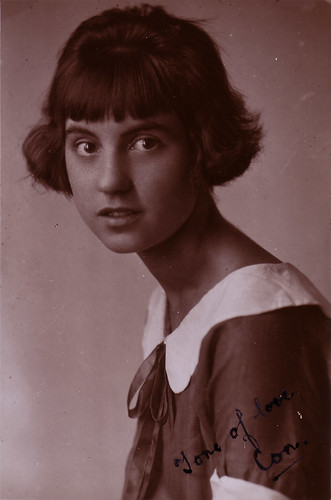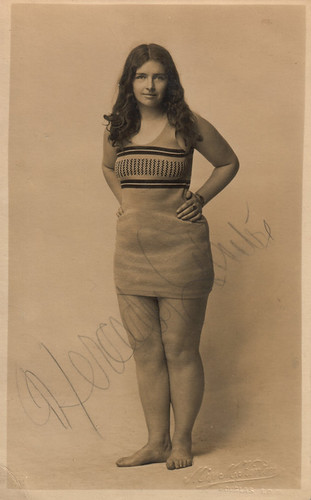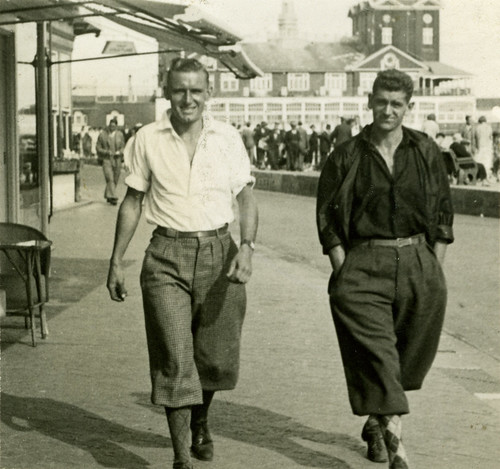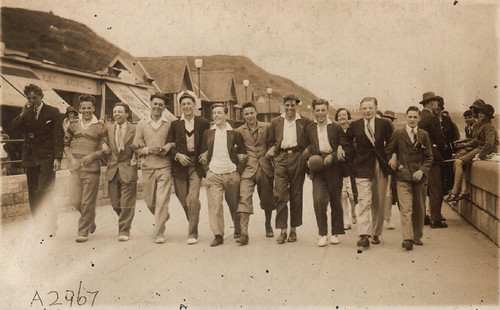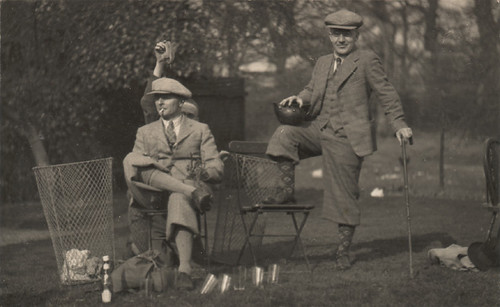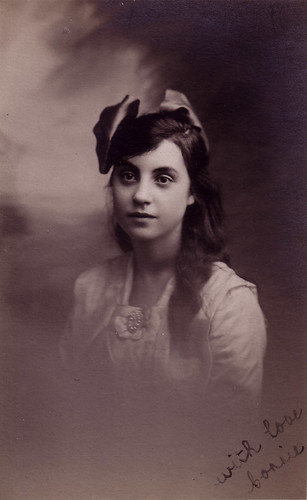
Meet the lovely Connie, captured some time in the 1910s (quite possibly during the First World War), with her tumbling tresses, huge bows and pretty pale silk dress with pearl beading.
Hollywood buffs might be reminded of "America's Sweetheart" Mary Pickford, at that time the most famous woman in the world.
But then the 1920s arrived:
the new modern Connie, originally uploaded by Trevira.
And Connie was transformed! She's bobbed her hair, and wears a simple day dress with a Peter Pan collar.
Not only that, but her inscribed greeting on the photographs has changed from the rather formal and restrained 'with love Connie' to the brash and informal 'tons of love Con.' Its not just her hair that has changed!
After I uploaded these two pictures on Flickr I got some interesting responses, including one from anniebee drawing parallels with F.Scott Fitzgerald's 1920 short story Bernice Bobs Her Hair (there's a link to the full text of the story on that page too).
And magpie-moon claimed to prefer the pre-bob Connie, which led me to wonder about the modern appeal of these two different aspects of femininity. Both play on the 'girlish' - the older style a flowery, frilly and wistful look of an adolescent who can't wait to grow up, put her hair 'up' and become a proper lady; the 'newer' style, although it looks more modern to our eyes, actually references the kind of haircut and dress that pre-pubertal girls wore at that time, and suggests a wish never to grow up!
As a rough indication of the relative popularity of these looks, the 1910s Connie photograph has been 'favourited' 23 times and the 1920s Connie has 21 'favourites' - 1910s Connie is ahead by a narrow margin.
I can't let this one pass without the now obligatory British Pathé gem, so here's a young lady getting her hair shingled (a later variant of the bob) in 1924 by the eminent hairdresser Emile Long:

